Guest post by Kevin Jameson
Hi. I’m Kevin Jameson, an allotment gardener for nearly 30 years together with my lovely wife Angela. I’ve been interested in gardening all my life thanks to my Mum. She’s 90 and is still as keen as ever. Once you have the bug it seldom leaves you.
We try to garden in a sustainable way using organic methods. Mostly with very good results and a steady supply of produce but as any seasoned gardener will say, you never stop learning. That’s part of the joy of it. I’m very pleased to have an opportunity to contribute to the blog and share some of our gardening experiences with you.
Gathering And Using Seaweed In The Garden
The horticultural benefits of using seaweed have been understood for centuries. Crofters on our coasts gathered it from the beaches in baskets and carts and spread it on the fields to feed their crops of oats, potatoes and kale.
Seaweeds are packed full of nutrients and minerals that benefit plants and stimulate healthy growth. We use this sustainable, natural fertiliser in preference to cow and horse manures and get great results as a reward. As many of us live reasonably close to the sea, it’s well worth exploring opportunities to find and collect some for the garden.
You may also be familiar with Caledonian Horticulture Kelpie Compost which is a special mix that includes seaweed.
During autumn and winter’s gales and tides seaweeds often collect into large clumps on the sea shores. Some of these heaps may soon be washed back into the sea or might be difficult to access, so it can take a while to discover a good opportunity. I usually bide my time, keeping an eye out for good places while enjoying a refreshing walk in the sea air.
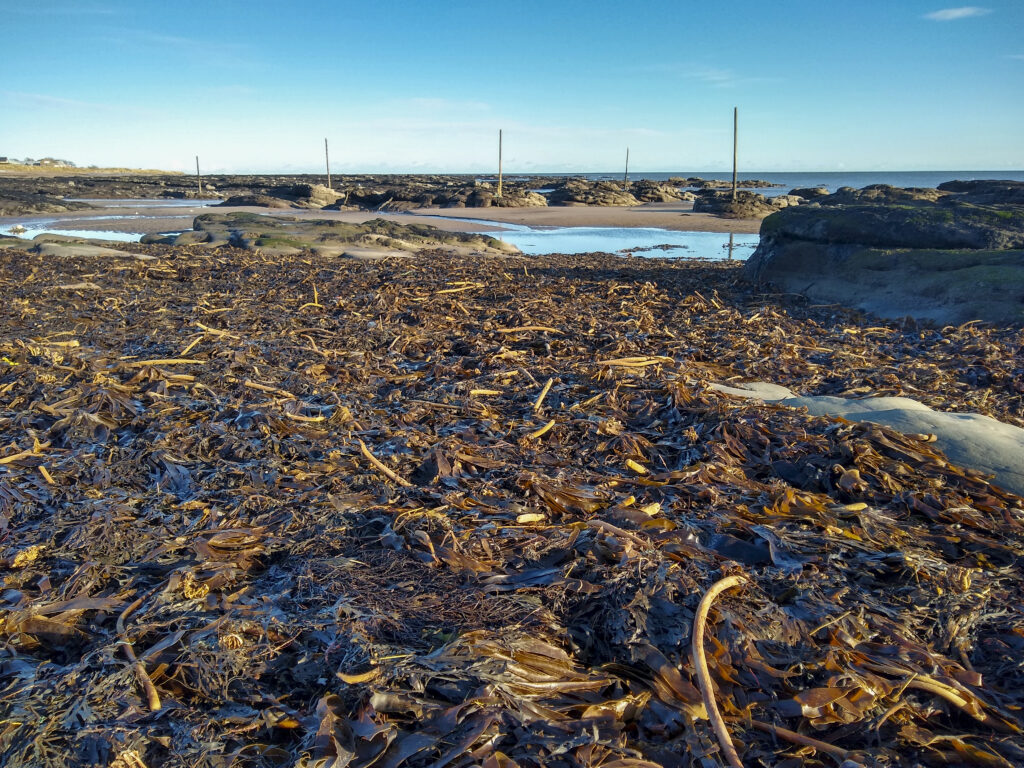
A large amount of kelp washed up on the shore
Collecting Seaweed
For me and a few other enthusiasts I know, seaweed gathering is a regular winter pursuit and a chance to get some exercise while doing good to your garden.
A good pile of seaweed will usually contain an assortment of different types. The larger, bulkier ones are various types of wrack and also kelps which have very long rubbery stems.
To give seaweed collecting a try, I would suggest filling a couple of modest sacks at a time to begin with. Also bear in mind that it is fairly heavy to transport from the seashore. The slippery texture when handling can also be a bit awkward.
Once you have got used to dealing with the logistics and have seen the benefits, you can like me, build up to gathering larger loads.
Using Your Seaweed
In my opinion, a winter surface mulch of seaweed is the best thing for vegetable beds. It provides an important layer of surface protection during severe weather while its nutrients are percolating into the soil below. It also works well spread around the base of fruit bushes such as currants.
By spring time, this seaweed mulch will have mostly shriveled up and is quite easy to dig in to the soil where it breaks down rapidly. If you prefer not to dig it in, you can easily rake it off the bed or simply leave it to continue breaking down naturally.
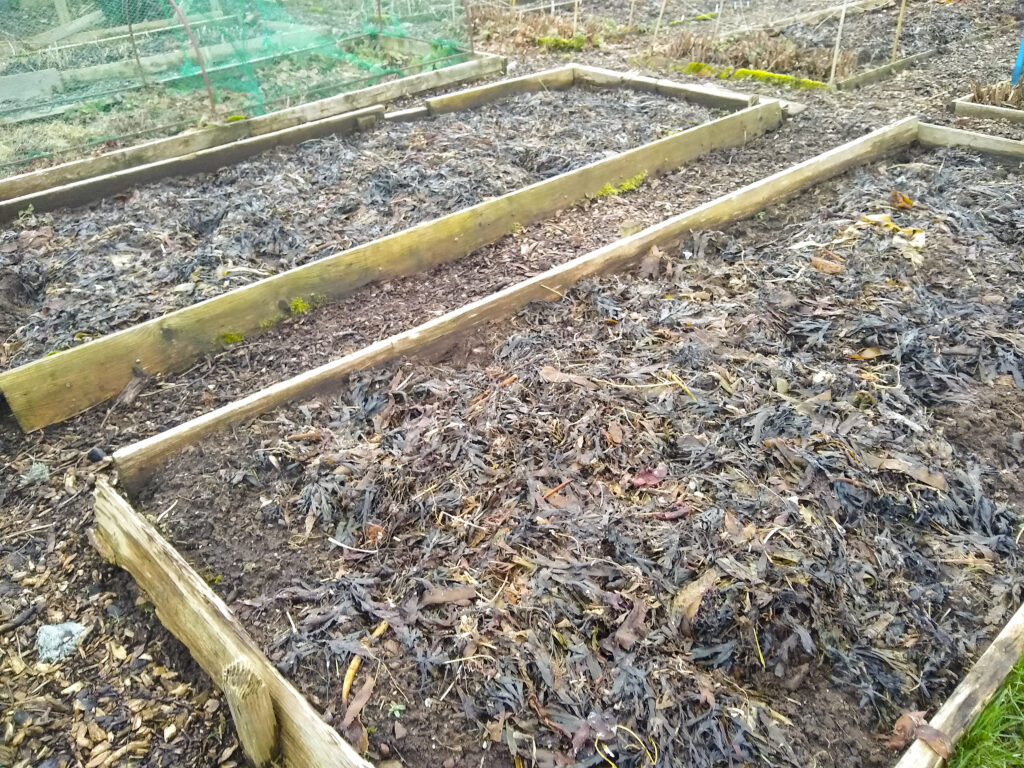
A winter surface mulch of seaweed on an allotment
Seaweed is also a brilliant addition to home-made compost. Add it to your mix in a bin or heap and it will speed up the process and add lots of extra goodness.
Give It A Go
This is a sustainable and healthy way to feed your soil, plants and of course, yourself. There might be a bit of work involved but it’s all good for both you and our planet.
A Few Tips For Seaweed Gatherers
– Use strong plastic sacks, waterproof gloves and a garden fork,
– Sharp secateurs easily cut through the thick stems of kelp, making it easier to collect and bag,
– Collect seaweeds from piles that don’t have much sand, shells or pebbles mixed in,
– Spread or compost the seaweed as soon as you can. Otherwise it may rapidly decompose in the plastic sacks.
– Ensure you wash your collected seaweed to remove it of any salt water that may be harmful to your plants or vegetables.
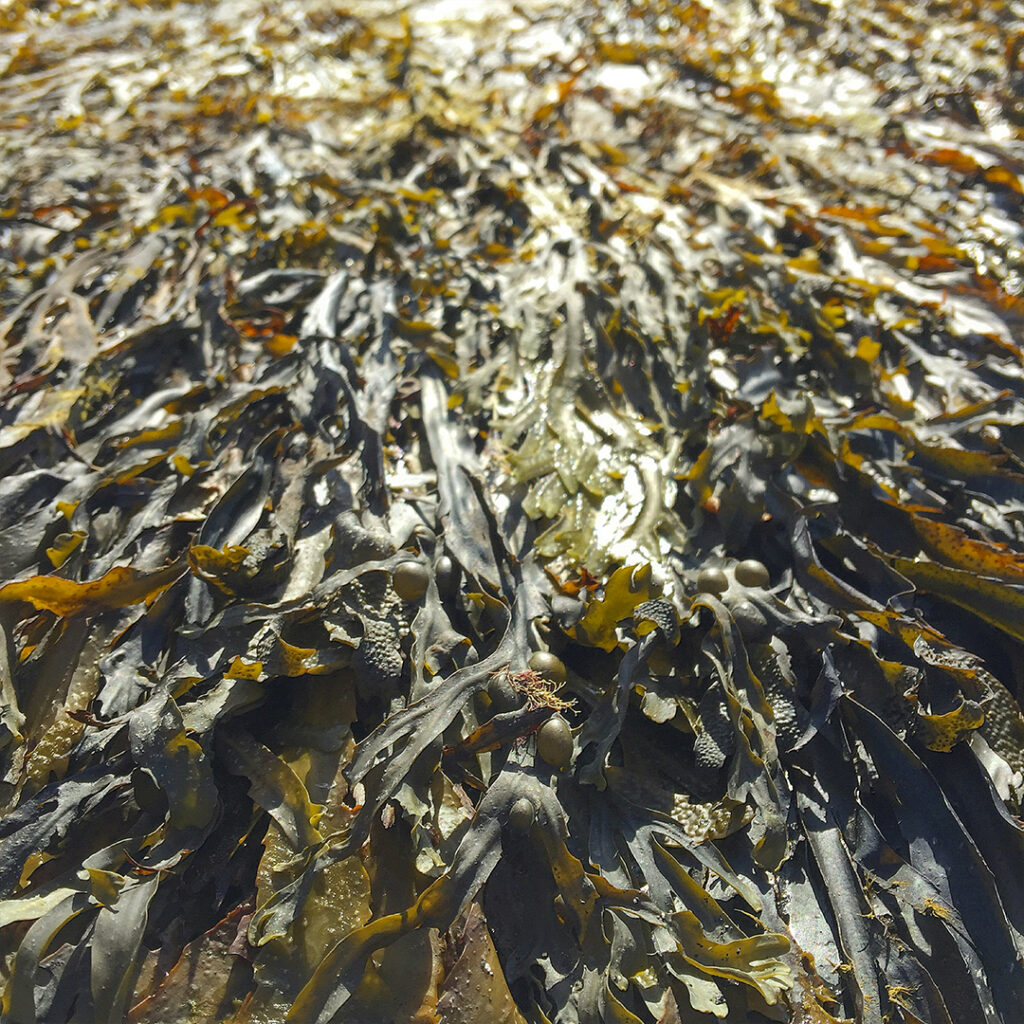
-
 Builder’s Bag Kelpie Compost£75.00 inc VATRated 4.96 out of 5 based on 138 customer ratings
Builder’s Bag Kelpie Compost£75.00 inc VATRated 4.96 out of 5 based on 138 customer ratings -
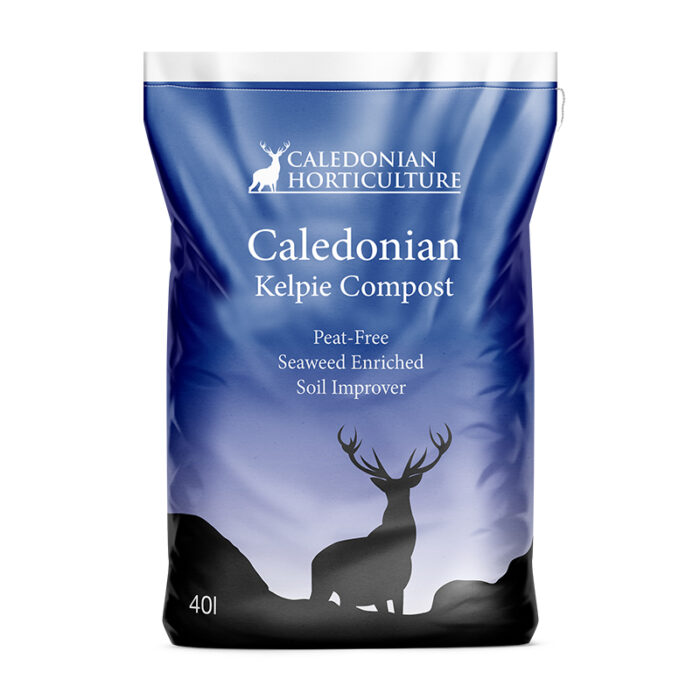 40L Kelpie Compost£4.75 – £5.75Price range: £4.75 through £5.75 inc VATRated 4.97 out of 5 based on 88 customer ratings
40L Kelpie Compost£4.75 – £5.75Price range: £4.75 through £5.75 inc VATRated 4.97 out of 5 based on 88 customer ratings


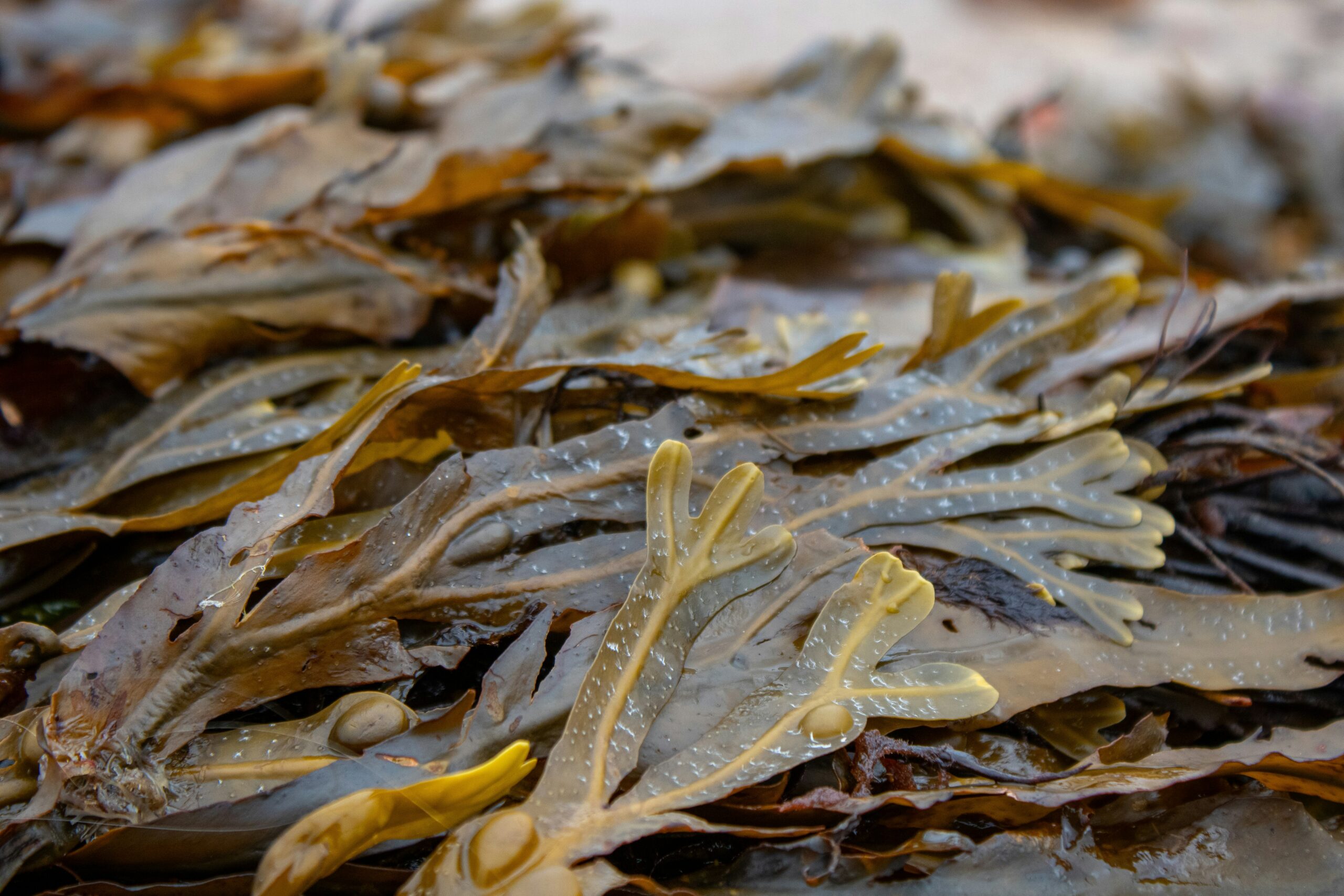

thanks for the great article, keep up the good work
Very good article – I have my favourite place for gathering seaweed! Perhaps worth mentioning that it’s not ok to use live growing seaweed! What we’re collecting is the stuff that’s washed high up on the beach.
Do you have to wash the salt water off, or will it harm your vegetable beds?
Good Afternoon Steve
Yes, ensure you wash your collected seaweed to remove it of any salt water that may be harmful to your plants or vegetables.
We have amended this to Kevin’s post.